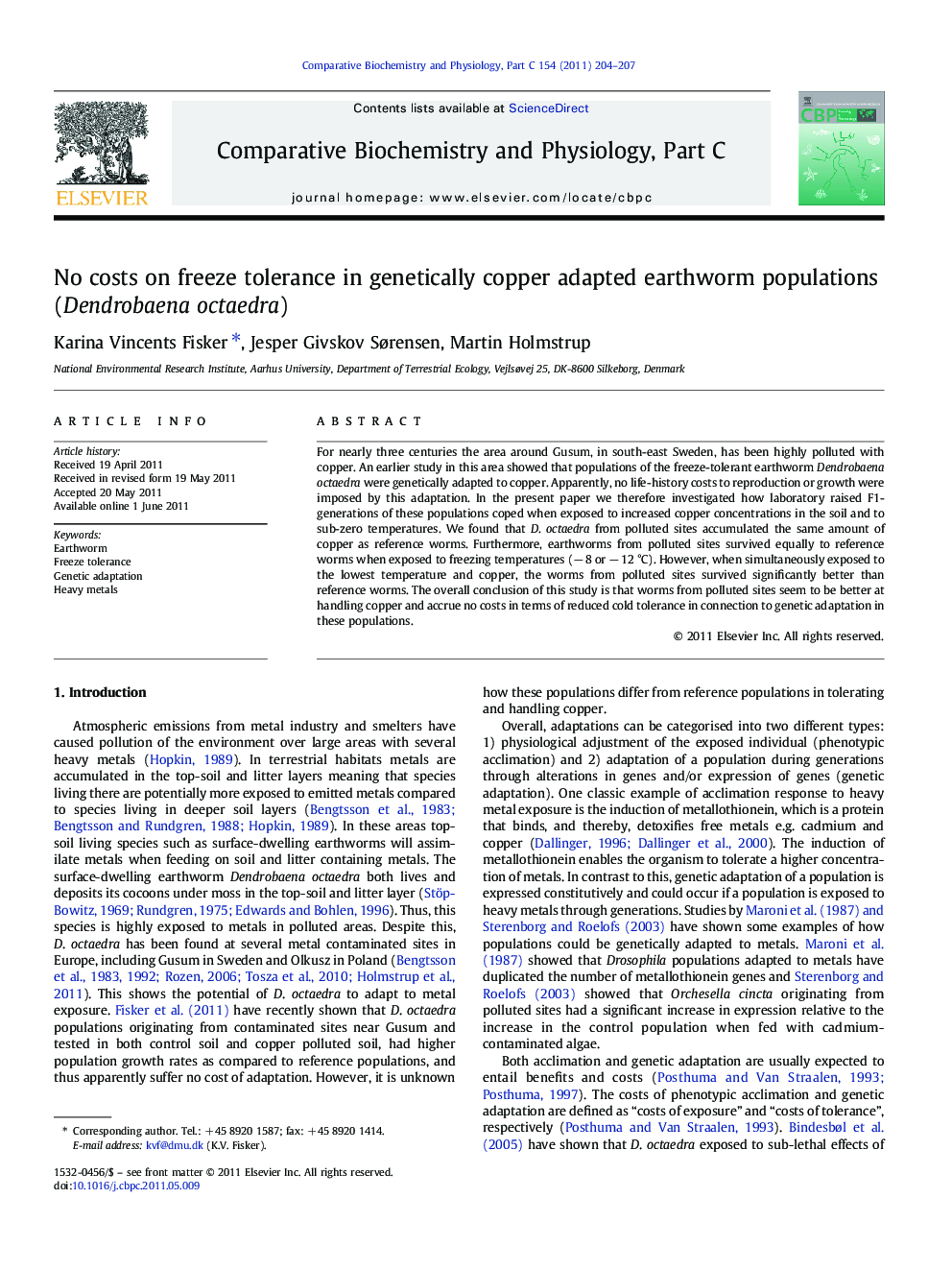| Article ID | Journal | Published Year | Pages | File Type |
|---|---|---|---|---|
| 10821756 | Comparative Biochemistry and Physiology Part C: Toxicology & Pharmacology | 2011 | 4 Pages |
Abstract
For nearly three centuries the area around Gusum, in south-east Sweden, has been highly polluted with copper. An earlier study in this area showed that populations of the freeze-tolerant earthworm Dendrobaena octaedra were genetically adapted to copper. Apparently, no life-history costs to reproduction or growth were imposed by this adaptation. In the present paper we therefore investigated how laboratory raised F1-generations of these populations coped when exposed to increased copper concentrations in the soil and to sub-zero temperatures. We found that D. octaedra from polluted sites accumulated the same amount of copper as reference worms. Furthermore, earthworms from polluted sites survived equally to reference worms when exposed to freezing temperatures (â 8 or â 12 °C). However, when simultaneously exposed to the lowest temperature and copper, the worms from polluted sites survived significantly better than reference worms. The overall conclusion of this study is that worms from polluted sites seem to be better at handling copper and accrue no costs in terms of reduced cold tolerance in connection to genetic adaptation in these populations.
Related Topics
Life Sciences
Biochemistry, Genetics and Molecular Biology
Biochemistry
Authors
Karina Vincents Fisker, Jesper Givskov Sørensen, Martin Holmstrup,
